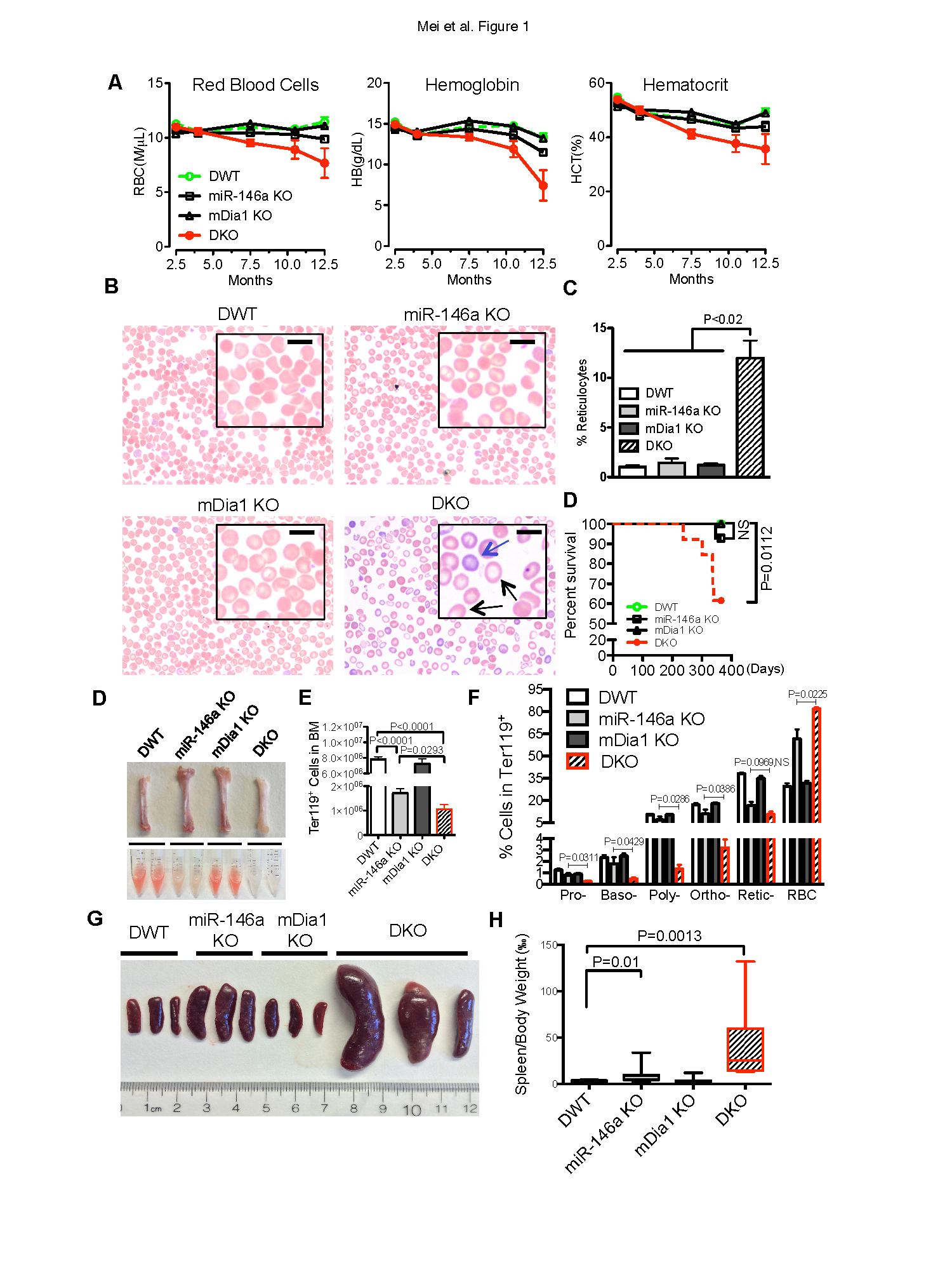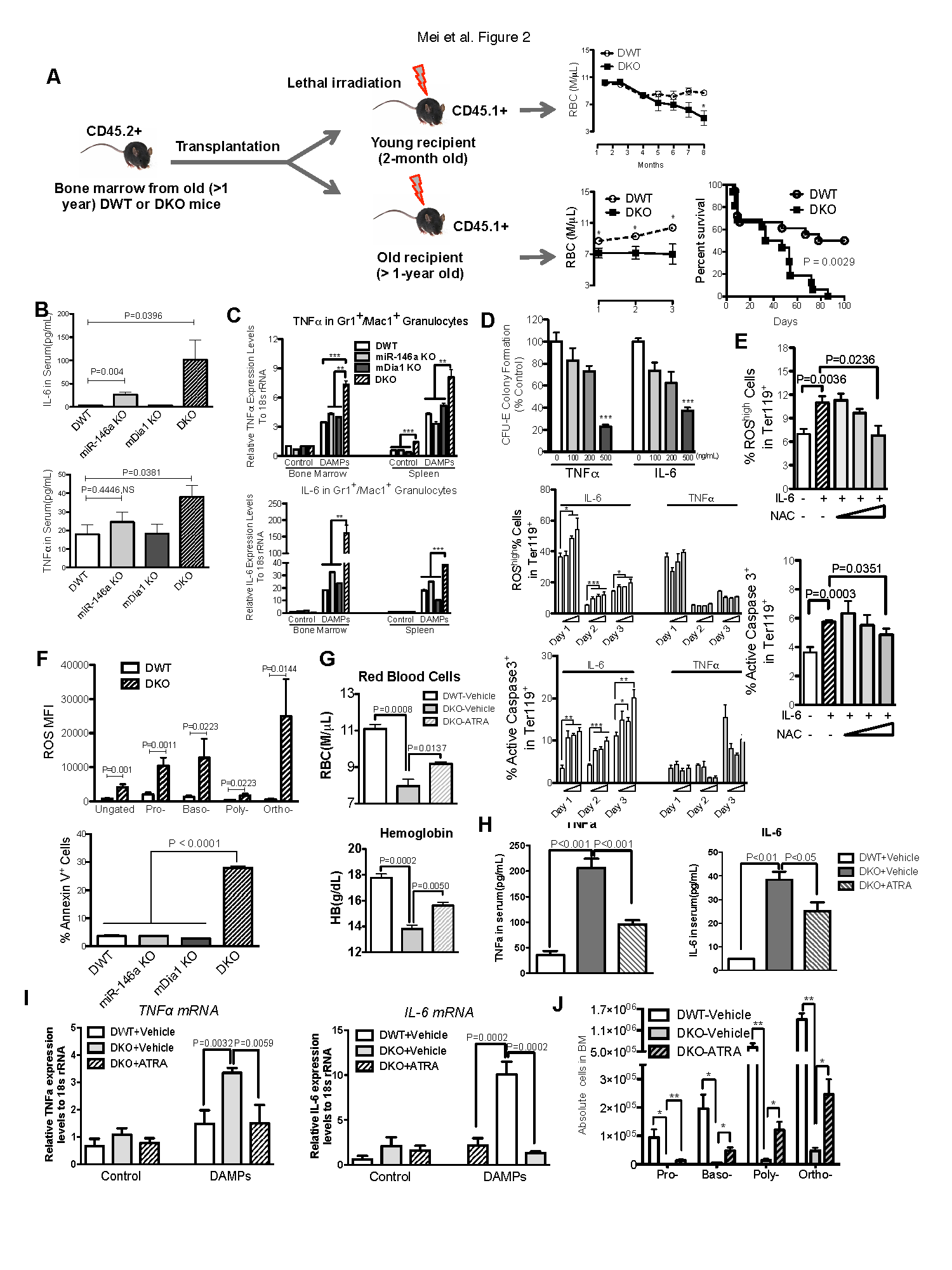Presenting Author:
Principal Investigator:
Peng Ji, M.D.,Ph.D.
Department:
Pathology
Keywords:
myelodysplastic syndromes (MDS), mDia1/miR-146a double knockout, anemia, ineffective erythropoiesis, ageing, TNFα, IL-6... [Read full text]
Location:
Third Floor, Feinberg Pavilion, Northwestern Memorial Hospital
B136 - Basic Science
Dual deficiency of mDia1 and miR-146a induces ineffective erythropoiesis
Myelodysplastic syndromes (MDS) are a group of age-related clonal hematologic diseases characterized by anemia, neutropenia, and thrombocytopenia. The mechanisms of anemia in MDS are unclear, which is due to the heterogeneity of MDS involving many cytogenetic and molecular abnormalities. Using a mouse genetic approach, here we show that dual deficiency of mDia1 and miR-146a, two genes located at chromosome 5q that is commonly deleted in MDS, causes an aged-related anemia and ineffective erythropoiesis that closely phenocopies human MDS. Various stages of bone marrow erythropoiesis were dramatically affected in aged mDia1/miR-146a double knockout mice, which induced a massive splenomegaly with potent extramedullary erythropoiesis. Using different transplantation assays, we demonstrate that the ageing bone marrow microenvironment is important for the development of ineffective erythropoiesis. Consistent with the roles of mDia1 and miR-146a in regulating innate immune responses, the serum levels of TNFα and IL-6 were significantly elevated in old mDia1/miR-146a double knockout mice. Damage-associated molecular pattern molecules (DAMPs), whose levels increase in ageing microenvironment, induced TNFα and IL-6 upregulation in mDia1/miR-146a double knockout myeloid-derived suppressor cells (MDSCs) and T cells. Mechanistically, we demonstrated that the anemia and ineffective erythropoiesis were independent of hepcidin expression in mDia1/miR-146a double knockout mice. Instead, pathologic levels of TNFα and IL-6 inhibit erythroid colony formation and differentially affect terminal erythropoiesis through reactive oxygen species-induced caspase-3 activation and cell apoptosis. Furthermore, in vivo treatment with all-trans retinoic acid (ATRA) targeting MDSCs in DKO mice improved anemia and ineffective erythropoiesis in bone marrow by attenuated cytokine productions. Our study underscores the dual roles of the ageing microenvironment and cytogenetic abnormalities in the pathogenesis of ineffective erythropoiesis in MDS.


